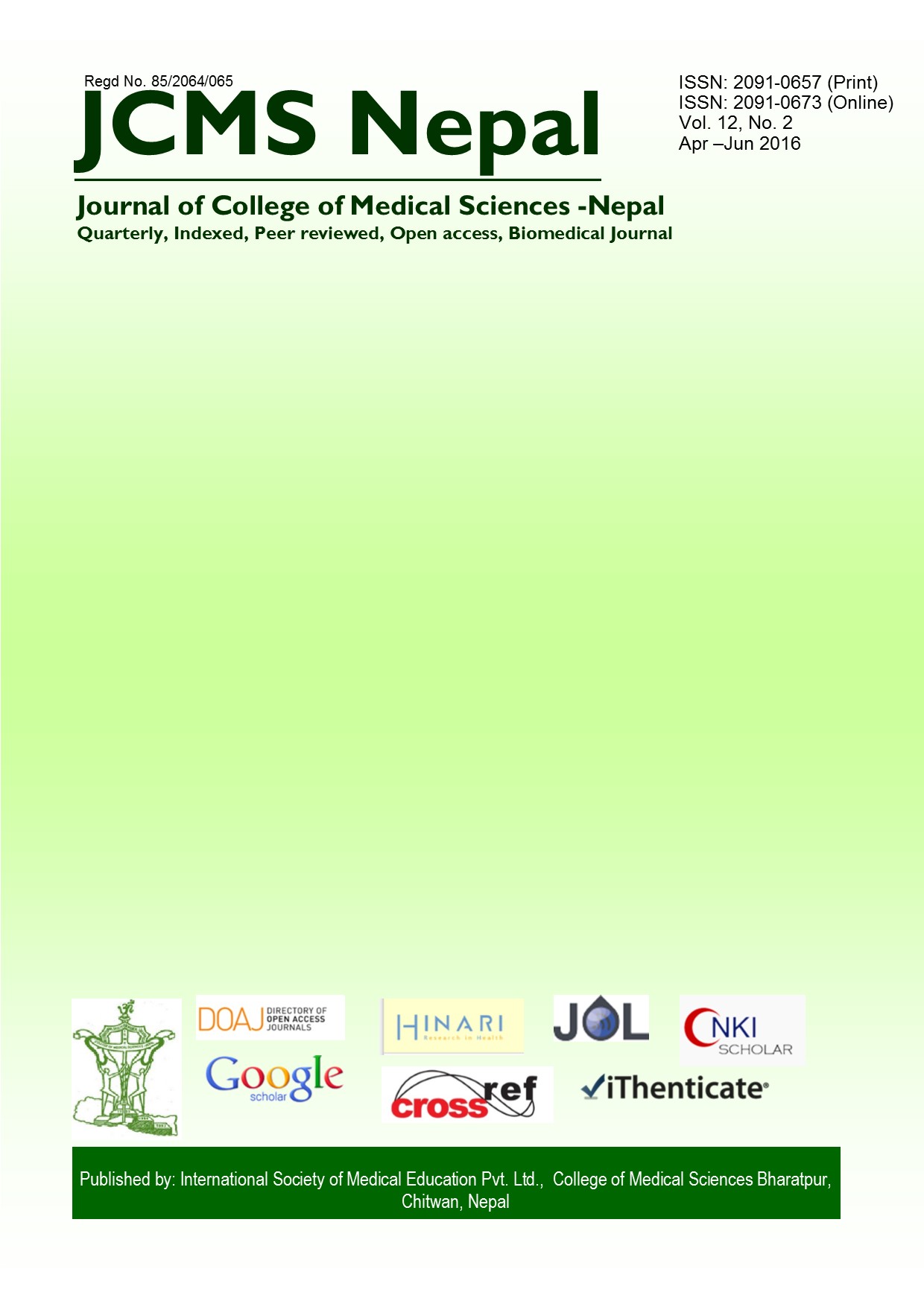Outcome of Intramedullary Stainless steel Rush pins for the treatment of Pediatric diaphyseal forearm bone fracture
DOI:
https://doi.org/10.3126/jcmsn.v12i2.15458Keywords:
Children, Diaphyseal forearm bone, Rush pinAbstract
Background & Objectives: Pediatric forearm bone fractures are common orthopedic injuries. Generally, these fractures can be successfully managed with closed reduction and casting however operative fixation may be required. Currently, the most common operative interventions are open reduction with plate fixation versus closed or open reduction with intramedullary fixation. Intramedullary fixation materials include Steinmann pins, Kirschner-wires, Rush pins, and elastic titanium nails. To demonstrate the outcome of Intramedullary Stainless steel Rush pins for the treatment of Pediatric diaphyseal forearm bone fracture.
Materials & Methods: This study included thirty children with diaphyseal forearm bone fracture treated with intramedullary stainless steel rush pin. Patient’s age, sex, side, mode of injury, fracture type, fixation indication and method, time of clinical and radiological union, complication rate and final range of motion were evaluated at subsequent follow up. Clinical evaluation was done as per Price’s criteria.
Results: Among 30 patients there were 22 boys (73.3%) and 8 girls (26.6%) with a mean age of 11.8 years (Range, 5 to14 years). Twenty (66.6%) patients had right forearm fracture, 10 (33.3%) patients had left forearm fracture. Union was obtained in a mean of 6.5±1.0 weeks (range 6 to 9 weeks). According to the criteria of Price et al. an excellent result was achieved in 25 patients (83.3%) and a good result in five patients (16.6%). Out of total 30 patients six (20%) had minor complications.
Conclusion: Fixation with intramedullary stainless steel rush pin produces good to excellent results in diaphyseal forearm bone fractures in children. Based on our experience, rush pins are simple, safe, easily available and affordable to most of the patients in developing countries.
JCMS Nepal. 2016;12(2):50-4
Downloads
Downloads
Published
How to Cite
Issue
Section
License
This license enables reusers to copy and distribute the material in any medium or format in unadapted form only, for noncommercial purposes only, and only so long as attribution is given to the creator.




